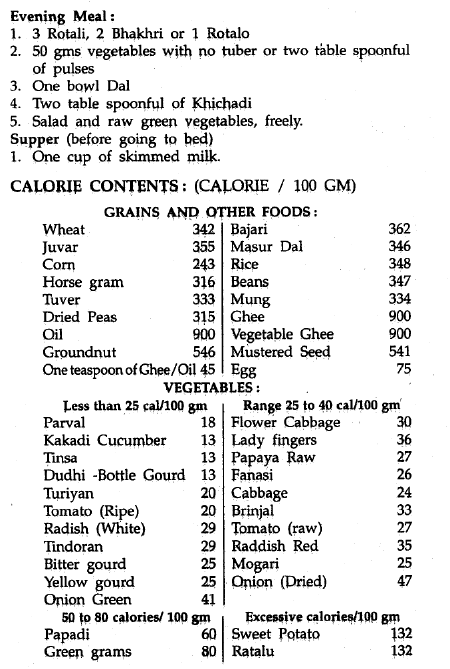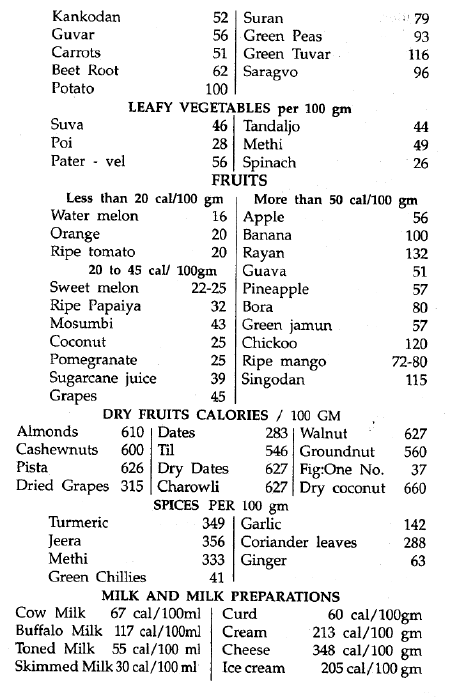HOW TO DIAGNOSE DIABETES?
60% of the diabetic patients get diagnosed accidentally only Of the remaining 40% the diagnosis comes out when the patient shows some signs of the disease or some complications are observed. It is not correct to say that when one gets diabetes his urine shows sugar being thrown out. It is essential to calculate the amount of glucose in the patientís blood.
If one observes the level of glucose of 140 mg per dl. on an empty stomach and at random checking patient shows 200 mg or more per dl. on more than one occasion, the patient is said to have diabetes.
Under some circumstances one has to get tested for glucose tolerance test to establish that a person has diabetes.
GLUCOSE TOLERANCE TEST (G.T.T.)
A blood sample is drawn out for this test initially on empty stomach. Thereafter 75 gm of glucose is fed to the patient.(for test of children it is at a rate of 1.75 gm per kg of body weight) Again blood is drawn out tw6 hours later If the proportion of glucose in blood on fasting works out to 140 mg/dl and 200 mg/dl or more after consuming glucose, the person is branded as diabetic.
GLYCOSYLATED HEMOGLOBIN (Hb A1c)
This examination reveals an average position of glucose in the blood over a period of past three months. This examination is known as Blood examination - Hb AiC. One can determine the amount of control over diabetes as under:
Hemoglobin (Hb A1C)
Condition
6
to 8%
Best
8 to 9%
Good
9 to 10%
Acceptable
10% and Above
Weak
OTHER EXAMINATIONS
For
the diagnosis of diabetes the proportion of glucose contained in the blood is
enough. But a disease is fully diagnosed only when we get complete information
about the quantum, its extent, complications etc. As for example, to say whether
a patient has heart disease or not, the blood has to be examined for its fat
content and a cardiogram is to be taken. To know about defects in the kidneys
micral test for albumin is carried out. In addition a complete examination of
eyes like fundoscopy is necessary This will reveal any effect of diabetes on the
retina of eyes. In order to find out whether the legs are sensitive or whether
blood circulates properly in the legs, an examination called vascular doppler
test is required to be carried out. In this manner at certain intervals all the
tests about damage to the various organs of a diabetic have to be carried out.
Then only diagnosis is said to be thorough and complete.
WHO CAN BE AFFECTED BY
DIABETES?
It
is difficult to reply this question clearly in each individual case. The main
causes for diabetes are found to be heredity, life which is more sedentary extra
obesity and mental tension.
HEREDITY
On studying the history of family of patients 30 to 40% of the cases are found to be such that some near relatives have diabetes. If the relations are mother and father both, the possibility of inheriting diabetes increases to a great extent. Even if one has no diabetes at least every year a diabetic expert must examine you after you reach 35 years. That is because the earlier you diagnose, the better and quicker the treatment can be made available.
OBESITY
Obesity
plays an important role in getting Diabetes. The more the weight the greater the
needs for insulin. Moreover the fatty cells of the obese do not properly respond
to insulin. The heavier the man is, the greater is the possibility of diabetic
death.
FOOD
Material
which contains more calories because of higher fat and higher sugar, creates
many problems and weight control becomes difficult.
AGE
Diabetes can be contacted at any age. But progress in age adds more to the possibility As man ages, the fat of the body reacts adversely to the insulin, simultaneously the beta cells which produce insulin also decrease in number.
FEMALE SPECIES
Males as well as females are prone to diabetes in equal proportion till they reach adulthood. Ladies can turn diabetic during their pregnant condition.
SEDENTARY LIFE AND MENTAL TENSION
Persons who have a habit of living uncontrolled life, un organised life, irregular life, as well as those who suffer from mental tension to a greater degrees and so often, are likely to get diabetes more easily
DIABETES
RESULTING FROM MEDICINE
If
medicines like steroids and thiazide are continued for extra long periods,
diabetes is likely to result. It is therefore, in our interest to consume these
medicines under doctorís advice.
TYPES OF DIABETES
There are mainly two types
of diabetes:
1. Type I - Insulin Dependent Diabetes Mellitus (IDDM)
This type of diabetes is mostly affecting children and youths. According to scientific investigations such patients get their pancreas damaged due to virus. In such cases the cells producing insulin normally get destroyed. For this reason there is deficit in production of insulin almost completely and therefore it becomes essential to get insulin injected from outside. In such cases, inspite of very stiff food control and consumption of medicines fatal results are quite common. Hence one should follow doctorís advice and take insulin injections.
2. Type II - Non-Insulin Dependant Diabetes Mellitus (NIDDM)
About 95 to 98% of diabetic patients fall in this class. People reaching the age of 40 in foreign countries and reaching the age of 35 in India are affected by this type of diabetes. In this type of patients, insulin is no doubt manufactured in the body but its quantum is lower than required. In some cases insulin does get manufactured in sufficient quantity but this does not cause proper effect. This diabetes, which is more common is less serious. Only by food control, exercises and performance of Yogic exercises, dia≠betes of around 30% of the patients can be controlled. Rest of the patients have to consume tablets for diabetes. In some cases such patients may also require to be injected with insulin.
WHAT ARE THE CONTROL MEASURES?
In order to prevent side effects which are either short term or long term side effects, the proportion of glucose in the blood has to be controlled. In case of healthy person the proportion of glucose in the blood gets controlled automati≠cally This proportion is in the range of 70Jo 110 mg/dl but once a patient gets diabetes he has to be careful to maintain this standard.
TABLE FOR CONTROL OF DIABETES:
CONDITION
BEFORE MEALS AFTER MEALS
Normal 110 mg/dl
140 mg per day
Acceptable 140 mg/dl
200 mg per day
Poor
More than 140 mg/dl More than 200 mg/dl
HOW TO KNOW WHETHER DIABETES IS UNDER CONTROL?
One can say that, a patientís diabetes is under control when:
1. No signs of diabetes are noticed.
2. The weight of patient is maintained.
3. The proportion of glucose in the blood is not abnormal.
4. Proportion of ketones in blood is controlled.
5. Content of cholesterol and triglycerides is kept within required limits.
TREATMENT OF DIABETES:
By regular and proper treatment diabetes can be con≠trolled. There are mainly three treatments for control of diabetes: (1) Food Control, (2) Physical Labour, (3) Medicines and Insulin.
FOOD CONTROL
About 30 % of the patients can control diabetes through food control. Of the rest, 30 to 40 % of the patients, one can reduce the need for medicines. Besides, it is possible to stop the side effects of diabetes pertaining to heart, brain, eyes and kidneys, both in long and short spells.
PRINCIPLES
CONTROLLING FOOD:
1.
Initially besides the ideal weight for a diabetic patient after observing his age and height. One should work
out the number calories daily needed, bearing in mind the weight and the
daily activities of the patient. For instance, if the patient is over weight,
food with lesser calories should be given to
achieve reduction in weight.
2. See that the change in the type of food that other members of the family consume, is least affected while serving the diabetic.
3. One should not consume sweet and fatty foods like ice cream, sweets, biscuits, chocolate etc.
4. One can freely consume green vegetables and salad like cucumber, tomatoes, carrots, cabbage etc.
5. Instead of taking food by filling the belly twice it is advisable to distribute eatables over four to five occasions so that the amount of glucose in the blood gets regulated.
FOQD
PRESCRIBED FOR A PATIENT OF DIABETES
Morning Breakfast:
1. Qne cup of tea or one cup of skimmed milk.
2. Two numbers of Khakhara or two whole wheat sliced bread or two Rotalies or one Bhakhri or one Rotalo.
Mid-day
Meal:
1. Rotali-3, or Bhakhri-2 or Rotalo-1 or whole wheat bread 3 slices.
2.
50 gm. Vegetables where tubers are excluded; cooked using the least oil.
3 One bowl Dal.
4.
Two table spoonful of pulses (mung, math, grams etc.)
5.
Two table spoonful of rice.
6. One roasted Papad.
7. Green vegetables and salad freely with a little Chatni.
Afternoon Tea-time:
1.. One cup of tea or one cup of skimmed milk.
2.
Two Khakharas or two whole wheat slices of
bread.
3.
One seasonal fruit.




Latest Additions.........
|
Sivananda Yoga (Yoga DVD)
Atam Mahek (Gujarati) / Fragrance ( English) - Swami Adhyatmananda |
Yoga, A Way of Life - Sri Swami Adhyatmananda
"Yoga and Health" - a complete book with Question & Answer section by Sri Swami Adhyatmananda
|
![]()
|
Please subscribe to Divyajivan Mailing List. We will update you with new uploads of spiritual literature on the web of Holy Master Sri Swami Sivanandaji Maharaj, saints of his lineage and other saints. We will also update you about the Sivananda Ashram, Ahmedabad website and facilitate communication with Sri Swami Adhyatmanandaji Maharaj. |
|
To manage your subscription, please visit Subscription Page. You can also subscribe and unsubscribe from this page. You may unsubscribe by yourself anytime you wish. You will be required to send confirmation link that you will get in your e-mail to complete this subscription. |
![]()